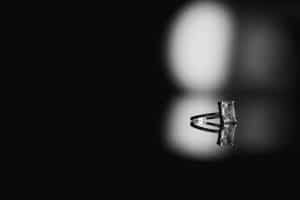The Psychology of Sale Signs: How Discounts Trigger Purchases
As consumers, we have all been there – walking into a store and being immediately drawn to a bright red sign that reads “50% off” or “buy one, get one free”. Our eyes light up and our hearts race with excitement at the thought of scoring a great deal. This is the power of sale signs. But have you ever stopped to think about why these signs are so effective in triggering purchases? In this article, we will delve into the psychology behind sale signs and explore why discounts have such a powerful impact on our buying behavior.
The Power of Perception
The first thing to understand about sale signs is that they tap into our perceived value of a product. When we see a discount, our brain automatically assumes that the original price of the product was higher and that we are now getting a great deal. This perception of getting a bargain triggers a sense of pride and satisfaction, making us feel like we have made a smart purchase.
The Fear of Missing Out
Another psychological factor at play when it comes to sale signs is the fear of missing out (FOMO). When we see a limited time offer or a sign that says “while supplies last”, our primal instincts kick in and we feel a sense of urgency. We fear that if we don’t make the purchase now, we will miss out on a great deal. This fear of missing out on something valuable is what drives us to make impulsive purchases, knowing that we may never have the opportunity to get the same deal again.
The Sense of Exclusivity
In addition to FOMO, sale signs also tap into our desire for exclusivity. We all want to feel special and getting a discount that not everyone has access to makes us feel just that. This is why many stores have loyalty programs or email lists where they offer exclusive discounts to members. By using these tactics, retailers are able to build a sense of exclusivity around their discounts, making consumers feel like they are part of an exclusive group that gets access to the best deals.
The Power of Emotions
It is no secret that emotions play a huge role in our purchasing decisions. When it comes to sale signs, our emotions are amplified, and we feel a sense of happiness and excitement at the thought of getting a good deal. This feel-good emotion is then associated with the product that we are purchasing, making us more likely to come back and make additional purchases in the future.
The Science Behind Pricing
Sale signs also tap into the psychology of pricing. When we see a discounted price, our brain automatically processes it as a better deal compared to the original price. This is because our brain is wired to perceive loss aversion – the idea that losing something is more painful than gaining something. In the context of discounts, seeing a higher price that has now been reduced triggers a response in our brain that we are avoiding a potential loss by getting a good deal.
The Power of Odd Numbers
Odd numbers, such as 49 or 99, are often used in sale signs because they have a psychological impact on our perception of prices. Our brain automatically translates these odd numbers into ‘below the nearest whole number’ and perceives them as a better deal compared to a rounded number. This is known as the left-digit effect and has been proven to be an effective pricing strategy in triggering purchases.
Conclusion
In the world of retail, sale signs are more than just a marketing tactic – they tap into the core of our buying behavior. By understanding the psychology behind sale signs, retailers are able to create a sense of urgency, exclusivity, and perceived value, making us more likely to make a purchase. So the next time you see a sale sign, remember that it’s not just about the discount – it’s all about the psychology behind it.









